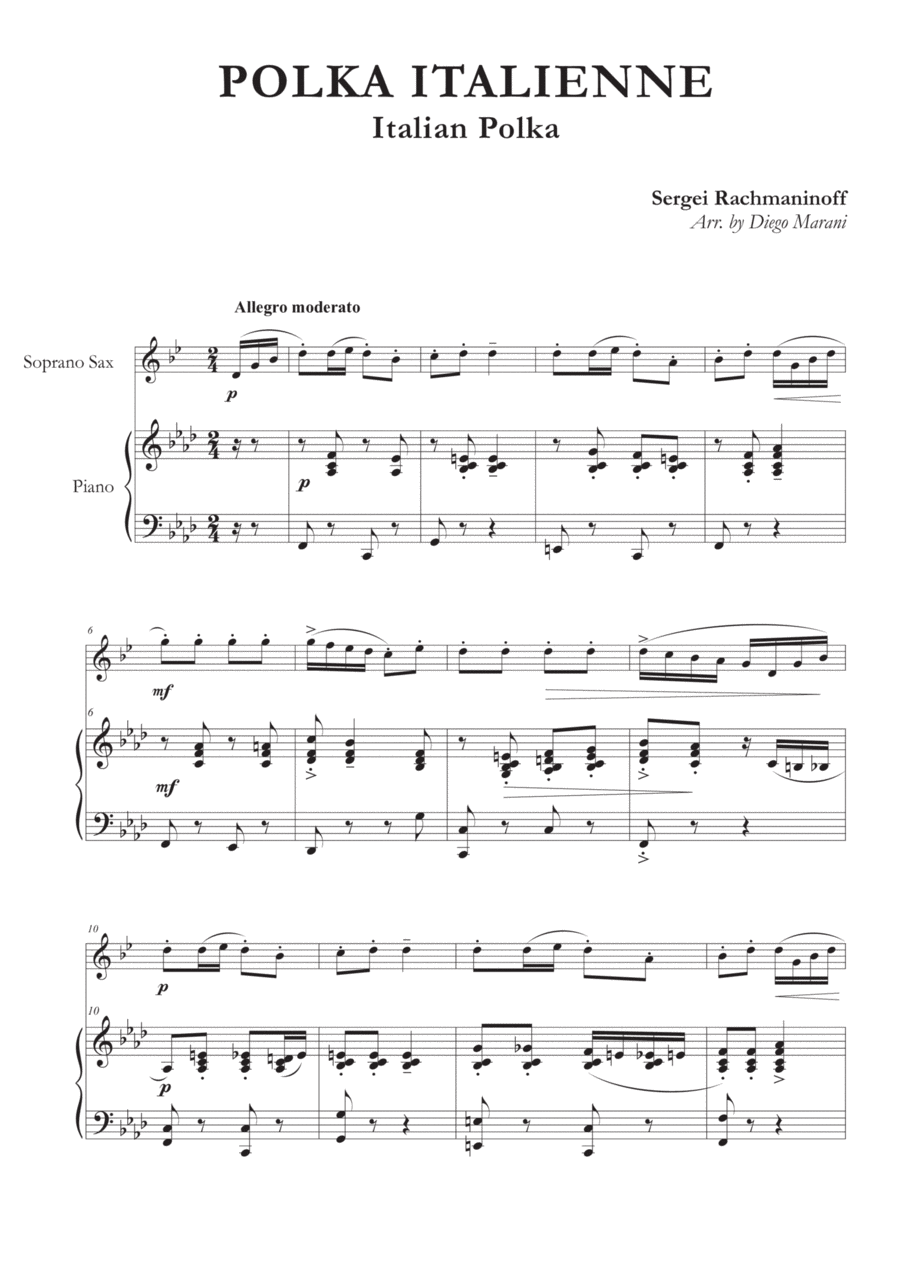Piano,Soprano Saxophone - Level 3 - Digital Download SKU: A0.669255 Composed by Sergei Rachmaninoff. Arranged by Diego Marani. 20th Century,Classical,Instructional,Romantic Period,Standards. Score and part. 8 pages. Diego Marani #278251. Published by Diego Marani (A0.669255). Sergei Vasilyevich Rachmaninoff was a Russian composer, virtuoso pianist, and conductor. Rachmaninoff is widely considered one of the finest pianists of his day and, as a composer, one of the last great representatives of Romanticism in Russian classical music. Early influences of Tchaikovsky, Rimsky-Korsakov, and other Russian composers gave way to a thoroughly personal idiom notable for its song-like melodicism, expressiveness and rich orchestral colours. The Polka Italienne (Italian Polka) is originally a piano work for two pianos. This arrangement for soprano sax (or Tenor Sax) with piano accompaniment is suitable for classroom, repertoire, recital and for a funny encore.
